There are several animals in the Peruvian Amazon, part of the world’s largest rainforest, stretched across several countries, including Brazil, Peru, and Ecuador.
When compared to anywhere else on Earth, it has the most unique and incredible wildlife.
So, if you are planning a trip to Peru, don’t forget to visit the Amazonian jungles. Here at Peru Jungle Trips, we have created a list of 10 animals you might encounter in the Peruvian Amazon Rainforest!
Pink River Dolphin
During the spring rains in South America, the Amazon River and its tributaries overflow, causing thousands of square miles of rainforest to be flooded and creating a vast, tree-covered expanse of water.
Pink river dolphins are incredible creatures that, as the name suggests, are pink in color.
During the wet season, Amazon river dolphins, or botos, swim in the vast, tree-covered waters that flood the rainforest.
Males have a distinctive smile and can be pink, which is believed to make them more attractive to females during mating season. Therefore, females venture into the flooded forest to escape aggressive males.

“Botos” have unique adaptations, such as unfused neck vertebrae and a long snout, that allow them to navigate the flooded environment and find prey. They are the largest of the four river dolphin species, reaching up to eight feet in length and weighing up to 450 pounds.
The pink river dolphins are associated with myths in South America, the most famous of which is that they transform into handsome men at night to enchant women.
Recently, and according to researchers from the Mamirauá Institute, which is funded by the Brazilian Ministry of Science, dolphin carcasses have been washing up on the shores of Lake Tefé in recent weeks.

Although the Amazon River experiences regular wet and dry seasons, the current extreme drought and soaring water temperatures are unusual, officials stated.
There are various efforts and complaints to help prevent and expose these issues for public knowledge.
These efforts to save the Amazon pink river dolphin include habitat conservation, education and awareness campaigns, and law enforcement to prevent hunting and other illegal activities.
These initiatives aim to protect the dolphin’s natural habitat, restore degraded ecosystems, and engage local communities in conservation activities.
Jaguar
Many people who plan a wildlife adventure hope to see a jaguar in the wild. According to reports, the Peruvian Amazon Rainforest homes over 5000 jaguars.
There is a low chance to see jaguars, but if you do, you are considered extremely lucky!

Peru’s National Forest and Wildlife Service (Serfor) approved the National Jaguar Conservation Plan (2022-2031) to ensure the survival of the species and its connected habitats through strategic management measures.
The plan, which includes a species diagnosis, serves as a management document for authorities and entities involved in wildlife conservation.
The jaguar population is threatened due to habitat loss, direct killing for illegal body part trade, decreased prey, and growing human-jaguar conflict due to population expansion.
The plan aims to conserve 40% of the jaguar population by 2031, reduce illegal hunting by 50%, and ensure all regional forest and wildlife authorities (covering the jaguar’s distribution area) implement effective measures for the species.
Red Howler Monkey
Another dream that most people have when they visit Peru is to see red howler monkeys.
There is a 50% chance of seeing one, and you can easily know one is nearby when hiking in the jungles, thanks to their sounds, which can be heard up to 5 km away.
The howler monkey is a species of concern, but its population has declined due to illegal trade and habitat loss.
One example of a parasite affecting howler monkeys is Trypanoxyuris sp., a type of worm that can infect them through consumption of eggs in their environment or through self-infection.

Giant River Otter
The world’s largest otters are the incredibly large river otters that live in the Amazon rainforest.
These otters, grow to heights of 1.7 meters, have a distinguishable vocabulary of over 20 sounds.
The Amazonian river wolf’s habitat is rivers, streams, marshes, and especially Amazonian lakes (cochas), with the latter being their preferred habitat for reproduction.

Their presence indicates good water quality, making them a good indicator of ecological perturbations and the state of conservation of a place.
Although there are significant conservation efforts within ANPs, no single conservation unit guarantees a sustainable population long-term.
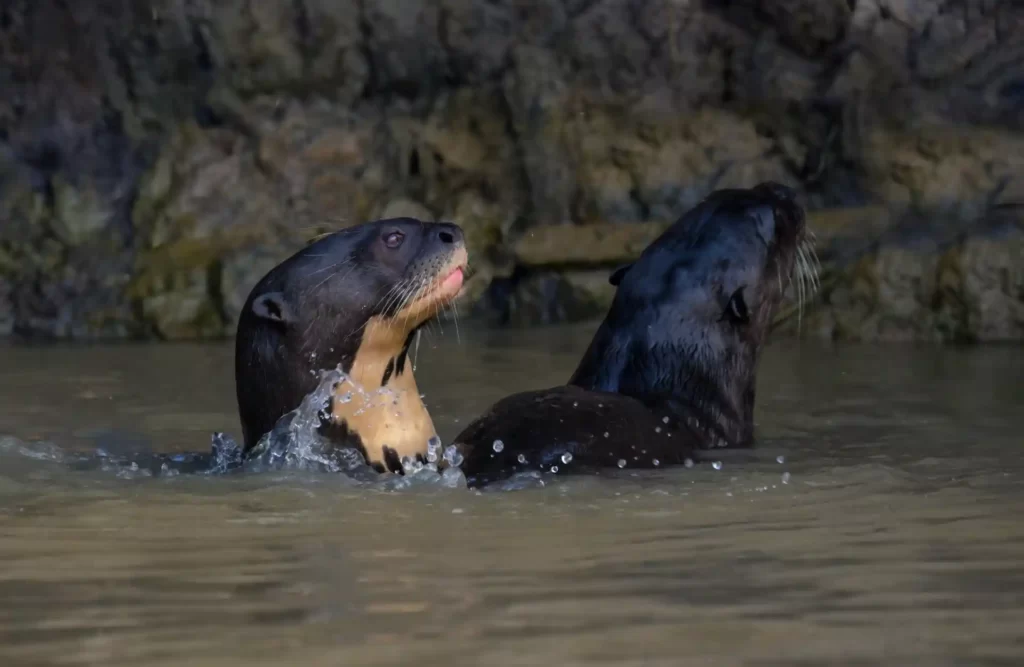
As a habitat-dependent species (“cochas” or lakes translated from the Quechua language), their unique habitat requirements and ecological and behavioral needs, combined with habitat loss and fragmentation outside of protected areas, make them highly vulnerable, reducing their potential for dispersal and colonization, subdividing populations into metapopulations that could impede genetic connectivity and contribute to local extinctions.
Puma
Pumas are the second-largest cats in the Amazon and closely resemble domestic cats because they purr instead of roaring like the other members of their species. However, seeing a Puma is extremely rare, even more so than seeing a Jaguar, because they prefer to be alone and away from human eyes.

Macaws
Macaws are beautiful birds that come in a variety of colors including red, blue, green, and yellow. They gather around clay deposits known as clay licks to feed themselves as other several species such as the tapir or more than 12 varieties of parrots.
Associations like The Macaw Society help to preserve these maginificent birds, however, the illegal wildlife trade in the Neotropics is still thriving, with a large number of parrots being sold illegally each year in urban markets.
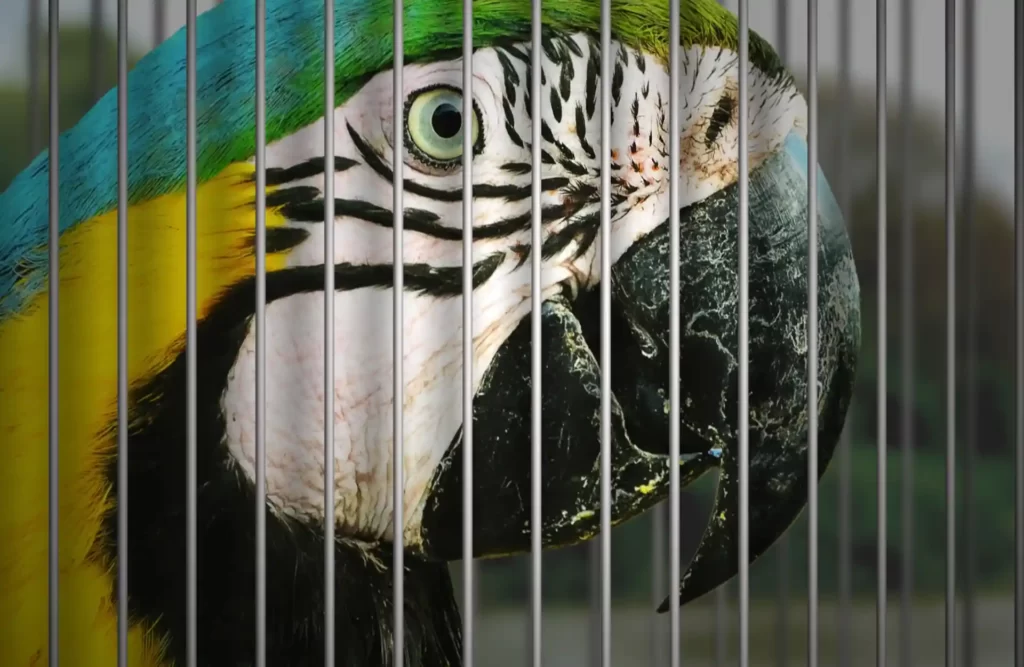
Despite this, there is a lack of knowledge on the specific locations where the parrots are poached, the species that are being targeted, the routes used for trafficking, and the impact of these activities on conservation efforts.
The Scarlet Macaw has feathers in three colors (red, blue, and yellow), and is the most common macaw in the Peruvian Amazon Rainforest.
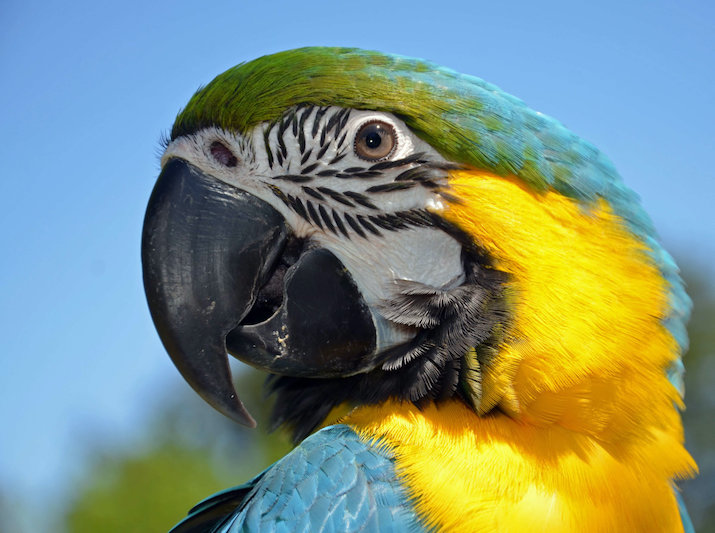
Tapir
Tapirs or anteaters may appear wild pigs at first glance. Rhinoceros and horses are the closest relatives of tapirs.
Compared to other Neotropical mammals, tapirs have been relatively understudied in the wild, primarily due to their low population densities and secretive behavior (SEMARNAT, 2009).
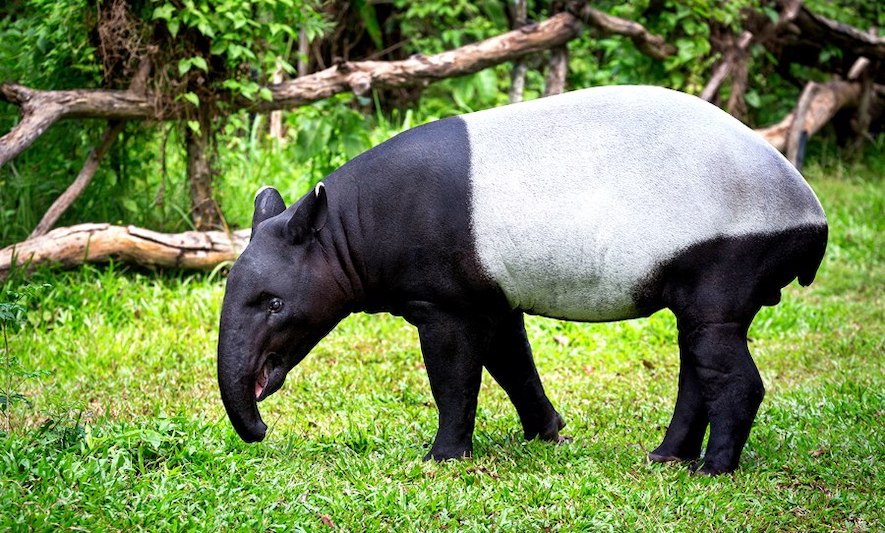
In Peru, two of the four tapir species found in the world are currently distributed: the Andean tapir (Tapirus pinchaque) and the Amazonian tapir (Tapirus terrestris), both species of significant sociocultural, biological, and economic importance since pre-Columbian Peru.
Importance
As a large mammal distributed in the tropical Andes, its significance lies in its role as a seed disperser, with studies showing it consumes up to 264 species and potentially dispersing at least 50 species of flora.
It also provides suitable substrate for the soils it inhabits and creates pathways for other fauna. Therefore, this species is considered crucial for maintaining the structure of high-altitude ecosystems in the northern part of Peru.
Habitat
The Andean tapir inhabits mountain forests (2,000-3,500 m) and paramos (above 3,500 m) in the Andes of Colombia, Ecuador, and northern Peru.
The home range of the tapir in the Sangay National Park in Ecuador is estimated to be around 880 ha (8.8 km2). Adult females have larger home ranges and often occupy parts of males’ territories.
The tapir moves through dense vegetation and slopes, and the home range of males (monitored by GPS collars) is estimated to be around 3.5 km2, with a total displacement of 94.1 km2 within an area of 94.1 km2 over a period of 6 months.
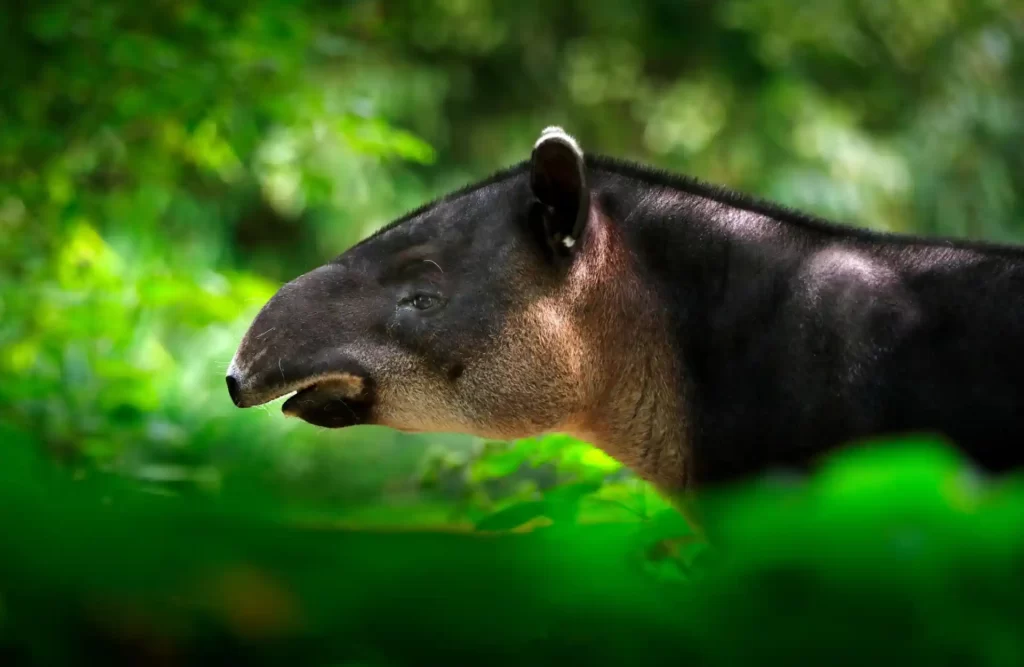
In Peru, the Andean tapir is found in the provinces of Ayabaca and Huancabamba in the Piura department, and in the provinces of Jaén and San Ignacio in the Cajamarca department .
It is also found along the Peru-Ecuador border in the Cordillera del Cóndor. The Andean tapir may have been present in western Venezuela in the past but it is unlikely to be found there currently.
Toucan
Toucans are distinguished by their huge, sometimes vibrantly colored beaks. Many toucan species live in the Peruvian Amazon Rainforest, including the yellow-ridged toucan and the green-feathered emerald toucanet.

Tambopata National Reserve in southeastern Peru is a prime location for spotting toucans, with seven species found within the reserve.
The Channel-billed and White-throated toucans are the largest species, measuring up to 48 and 50 centimeters in length, respectively.
The Channel-billed toucan has a vivid yellow breast and electric blue markings around its bill, while the White-throated toucan has a white breast and a huge red bill.
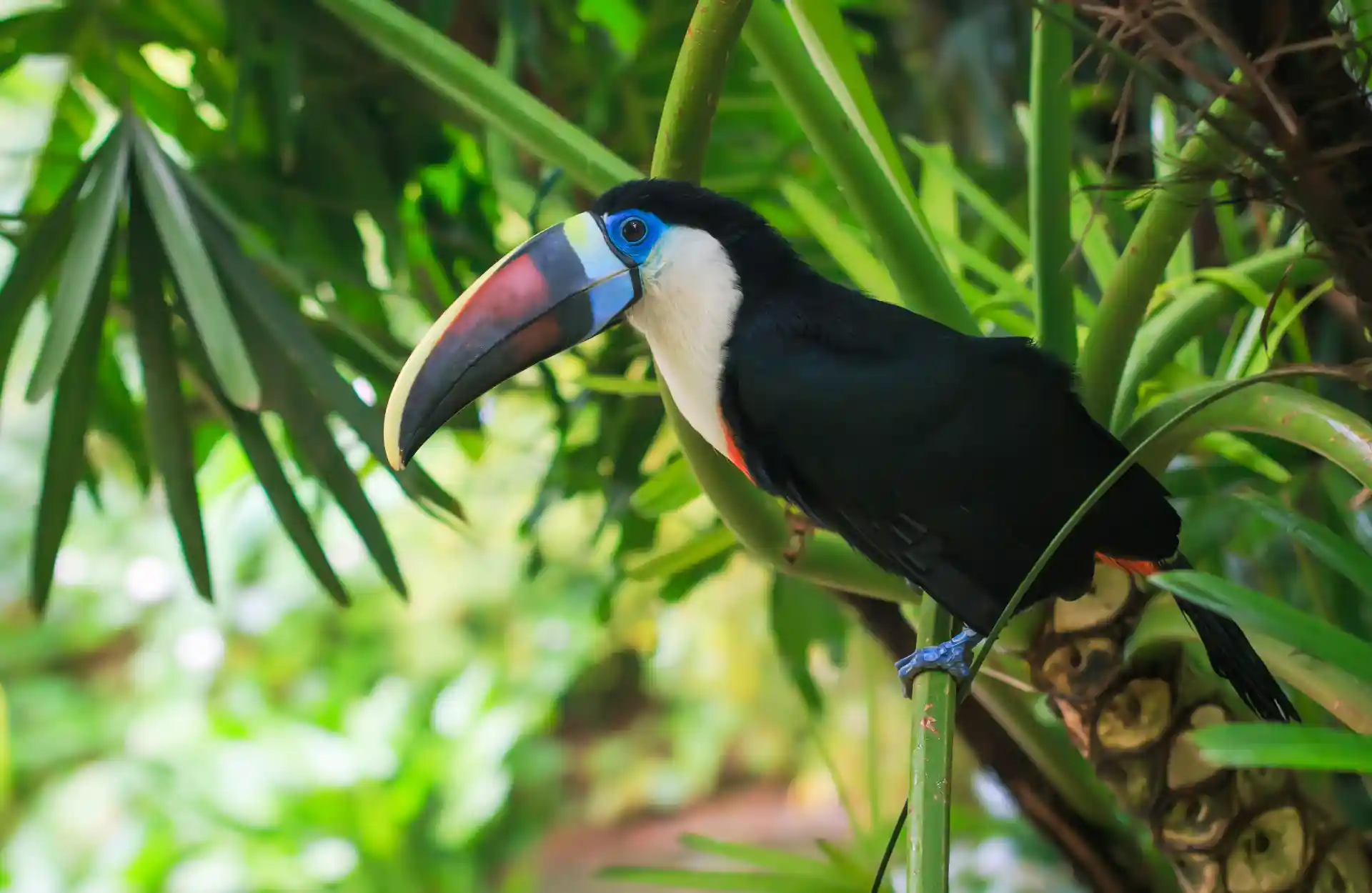
Both species have oversized bills, measuring up to 14 and 22 centimeters long, respectively. These toucans are easily recognizable and can be found throughout South America, from Trinidad to Bolivia.
The Poison Dart Frog
Poison dart frogs are amongst the most vivid amphibians found in the Amazon jungle. Their vibrant colors, which range from shades of red, blue, and yellow are an important defense strategy to fend off predators.

Black Caiman
The black caiman is the top predator in the Peruvian Amazon rainforest.
As the name implies, this reptile has black scales that help it blend in with its environment, making it difficult to see. So, make sure to be careful when you are hiking in the dark.


